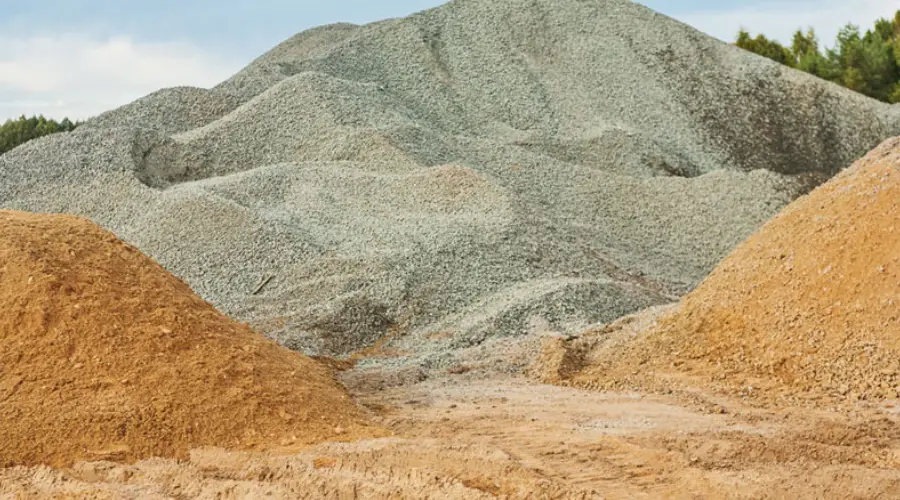M Sand is the new sand that has been replacing traditional river sand in recent times. M Sand and river sand have distinct benefits and can be used interchangeably most of the time.
M Sand is the abbreviated term for “Manufacture Sand” and is a commonly employed sand variety in construction. It is considered to be one of the best alternatives for river sand.
River sand, on the other hand, is a naturally available resource and a suitable sand variety for construction. However, due to its rapid depletion due to uncontrolled exploitation, alternative sand varieties, such as M Sand, have been sought after.
Difference Between M Sand and River Sand
The differences between M Sand and river sand are important to understand so that appropriate sand can be selected for the intended application in construction.
Some of the key differences between M Sand and river sand are given in the following table.
| M Sand | River Sand | |
| Origin | Artificially created by breaking down rocks, granite, or limestone into smaller particles. | Naturally occurring sand originated from the erosion of rocks by water currents of the rivers. |
| Shape | Angular shaped. | Round shaped. |
| Texture | Angular and rough | Smooth textured. |
| Size | Particle size ranges between 0 and 4.75 mm. | Particle size generally ranges between 0 and 4.75 mm and can vary depending on the river source. |
| Strength | Due to its angular shape and consistent grading of particle size, it helps make stronger concrete mixes. | The strength of river sand depends upon its source. Well-graded river sand can help make stronger concrete mixes. |
| Impurities | Do not contain many impurities like clay or dirt. | It contains impurities like clay, silt, and other matters that must be washed and screened before usage. |
| Workability | The angular shape of the sand would require more water dilution to form good concrete mixes. | The particles’ rounded shape enables good workability in concrete mixes. |
| Applications | M Sand, or Manufactured Sand, is used in concrete production due to its consistent size and shape, enhancing strength and durability. It is ideal for constructing load-bearing structures like beams, columns, and slabs, and is also used in bricklaying and block making. M Sand is preferred in road construction and other civil projects for its stability and sustainability. | River Sand is traditionally used for plastering and finishing walls, providing a smooth surface due to its fine texture. It is also used in brick and block laying for its excellent binding properties. Additionally, River Sand is favored in concrete production for high workability and smooth finishes, though its overuse raises environmental concerns. |
| Cost | M sand cost-effective option than river sand. | Traditionally cost-effective. But has been growing costlier due to restrictions on procuring of river sand. |
| Environmental Impact | A sustainable alternative to river sand as it does not include extraction from riverbeds. | Exploitation of river sand can hurt river ecosystems. |
Pros and Cons of M Sand
M Sand has advantages and disadvantages, although it is preferred as an appropriate alternative to river sand.

Pros of M Sand
The primary advantages of M Sand are its sustainability aspect and extensive availability compared to river sand. Its fine grading, strength, and durability make it highly workable with mortar and concrete mixtures.
Cons of M Sand
M Sand is not applicable in plastering functions. The angular shape of the M Sand particles demands high water for mixing. The availability of M Sand in all places, alongside its cost-effectiveness, is also doubtful.
Pros and Cons of River Sand

Pros of River Sand
The pros of river sand include its natural and ready availability. It is preferred widely over other varieties of sand due to its high workability. Its rounded sand particles make it easy to mix with water and apply the required purposes.
Cons of River Sand
River sand is becoming increasingly inaccessible and costly due to stricter rules and regulations for procuring it.
The quality and strength of the river sand particles are also inconsistent due to the varying river sources.
Conclusion
M Sand and River Sand have distinct differences in their origin and properties. M Sand, made by crushing granite, has an angular and rough texture, making it ideal for strong concrete and structural applications. It supports sustainable construction by reducing the need for natural river sand.
River Sand, with its smooth and rounded texture, is best for plastering and finishing but its overuse harms the environment. Understanding these differences ensures you choose the right sand for your construction needs, balancing quality and sustainability.
Always compare the pros and cons of M Sand and river sand and choose the right fit for you!
FAQs
You can technically mix and use river sand and M Sand. However, they may pose threats, such as inconsistent quality and workability issues.
River sand is naturally occurring sand with smooth, rounded particles, ideal for plastering and finishing. Building sand, often M Sand, is manufactured by crushing stones, resulting in angular, rough particles, perfect for strong concrete and structural uses.

